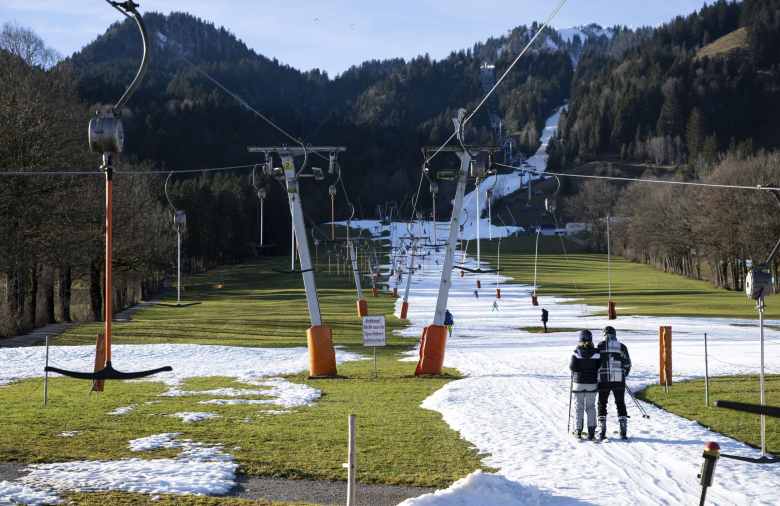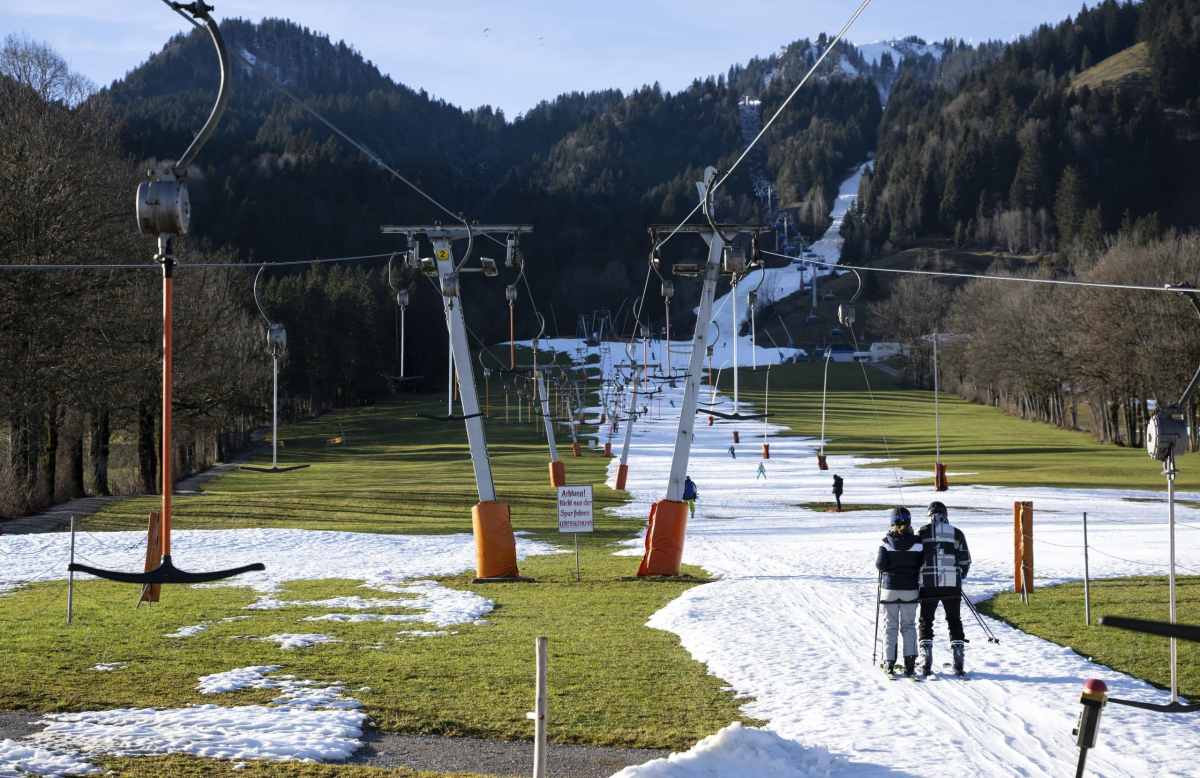
It is Monday morning as we write this, one week since a tree at Park City Mountain fell on a lift cable and ultimately killed 29-year-old ski patroller Christian Helger.
The weather is fine now, 30 degrees and overcast, and snow is starting to fall lightly as we wait to see what the afternoon will bring. There’s the possibility of snow in the forecast from about noon today well into Tuesday, so we’re slightly ahead of a curve that could add considerably to the more than 200 inches of snow we have so far this season.
In some ways, even many ways, this is great news for Park City Mountain and Deer Valley and even for some Main Street businesses that are seeing spillover benefits as visitors and day-skiers flock to Park City for a series of unprecedented weather events.
Noon Monday: The wind is rising and the snow is falling faster now.
Farther west, in San Francisco, it’s 56 degrees and raining with winds up to 45 mph predicted.
“Forecasters are calling this system an atmospheric river because it is rich in moisture and bringing periods of heavy rain,” San Francisco’s sfgate.com reported. “A flood watch and wind warning were in effect across the region Monday morning. Just south of the Bay Area, the Big Sur coast is forecast to receive up to 12 inches of rain at the wettest locations in the mountains and mudslides and flooding in wildfire burn scars are a concern. ‘Threat to life is likely during these storms,’ the weather service warned.”
This is likely the same weather pattern that struck the West Coast eight days ago and extended across the Intermountain West, hitting the Wasatch Back. The snow it brought to Park City Mountain “wasn’t the typical ‘right side up’ fine powder that Utah is known for,” The Salt Lake Tribune reported. “Stemming from an ‘atmospheric river event,’ it carried about twice the amount of water as is usual for the Wasatch Mountains.” A meteorologist for the National Weather Service told the Tribune “the snow-to-liquid ratio of a typical Wasatch range storm is 13-to-1. This one varied from 5-to-1 to 9-to-1.”
And heavier snow sits heavier in the trees.
Monday, mid-afternoon: Wet snow is falling steadily now. The wind is brisk. Urban flooding on roadways is expected in the San Francisco Bay Area.
“As climate change warms the earth’s atmosphere, water from oceans, lakes, and streams evaporate. This increased moisture in the air then feeds atmospheric rivers to grow longer, wetter, and more intense on a warming planet,” ABC News reported earlier this month, referencing a study from the American Geophysical Union.
Europe, meanwhile, is seeing what at one time we might have called a winter heat wave, with record-high daily temperatures recorded in Bosnia, Belarus, Belgium, Czechia, France, Germany, Latvia, Lithuania, the Netherlands, Poland and Switzerland. “Much of the Alps just don’t look right for this time of year,” said an AP dispatch on Jan. 2. Today, on NPR’s Morning Edition, there was a report from Big Moose, New York, “the snowmobile capital of the East,” where unseasonably warm weather is crimping tourism and business.
Given that this is part of a pronounced, longterm trend attributed to global warming, sooner or later — and probably sooner — we are going to have to stop calling it “unseasonable.”
Monday, 5 p.m.: In Park City, it’s the same 32 degrees it’s been all day. Wet, heavy snow is starting to stick. The wind is up.
Just north of Los Angeles on the California coast is the small, wealthy enclave of Montecito. It is not altogether unlike Park City — although Montecito is home to Prince Harry and Meghan, and Ellen. And it’s being evacuated now as rains lash the coast and the city has reached its maximum capacity for floodwater containment.
Tuesday morning: In Montecito, Highway 101 is submerged in mud. Hundreds of thousands of Californians lost power overnight; there is hundreds of millions of dollars of damage to roads from flooding and mudslides. “The main band of rain has moved on, but this isn’t over,” the National Weather Service local forecaster in Santa Cruz said Monday night.
It’s never going to be over, is it?
In Park City, a few more inches of wet, heavy snow fell overnight. It’s clumped in the evergreens in Prospector Square like vanilla icing, on a bluebird day.
Park City Mountain apparently has been cutting down trees since last week’s chairlift accident.
While that work may continue, there is a story we ought to remember, about the Romanovs, Nicholas II, the last tsar of Russia; his wife, the tsarina, Alexandra; and their son and heir, Alexei.
Little Prince Alexei had a hereditary form of hemophilia, which kept his blood from properly clotting. At the time it was untreatable. The tsar and his family generally kept Alexei’s illness a secret so the royal bloodline would not be seen as tainted, but they also took great precautions for Alexei’s safety. Alexandra desperately wanted to keep the boy from so much as scratching himself.
In order that Alexei could go out and play in the immense private gardens of the Peterhof Palace, in St. Petersburg, servants were made to wrap the shrubs and hedgerows with cotton batting. Many servants did the work, who naturally talked and grumbled among themselves, about how even the tsar could not make the natural world safe for his heir. And then the revolution came.
Even if we could cut down all the trees on the mountains to make the mountains safer for skiers, and business, we know we shouldn’t.
Don’t we?

